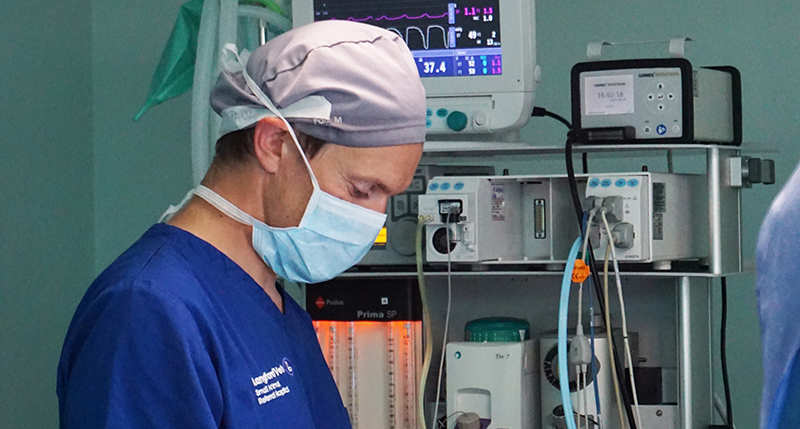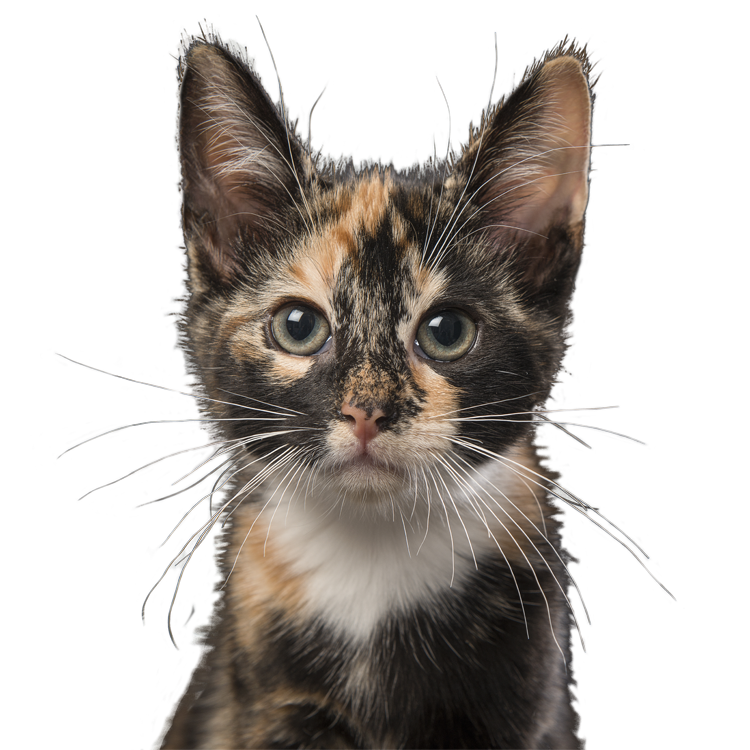Anaesthesia and Acute Pain
The anaesthesia service provided within the Small Animal Referral Hospital is world class.
We have the largest Veterinary anaesthesia team in the South West of England, combining a large team of Veterinary Surgeons who hold the European Diploma in Veterinary Anaesthesia and Analgesia (DipECVAA) or are eligible to sit the certifying examination, trainee Veterinary anaesthetists, and Registered Veterinary Nurses who work exclusively with anaesthesia.
Frequently Asked Questions - Anaesthesia and Acute Pain
My dog has a heart murmur. Is it dangerous to give them an anaesthetic?
Heart murmurs are caused by the blood flowing differently through the heart compared to normal. Some are more serious than others, either due to the type of blood flow abnormality or the severity of the condition. We may wish to investigate the murmur further to find out more about the abnormality. During anaesthesia, the heart and blood vessels are affected by the drugs we use, and this can change blood flow. In most animals with murmurs this change is not too significant although we need to carefully monitor the situation throughout anaesthesia. The risk of complications from anaesthesia can be higher in animals with heart murmurs but with our experienced anaesthesia staff we hope to minimise this.
My breeder has told me what drugs my dog should have in his anaesthetic, will you take account of this?
Some breeds of dog are particularly sensitive to certain drugs we commonly use in anaesthetics. For example: some Collie-type breeds have an inherited genetic deficiency which leads to sensitivity to some drugs which can affect anaesthesia. We are used to dealing with these. However, if you have been told your dog is sensitive, it is important to pass this information on to us.
My dog is 15yrs old. Is it safe to anaesthetise elderly animals?
As animals (or people) get older, the internal organs tend to decrease in efficiency (e.g. the heart, lungs, kidney, and liver), even if they are still bright and cheerful. Anaesthesia places a strain on these organs too. It is often important to know how well the organs are working before anaesthesia, and so we sometimes recommend some tests (e.g. blood samples) first. Once we know about the organ function, we can design an appropriate anaesthetic for an older animal. It will have more risk than in a young, healthy dog, but by using careful preparation and monitoring during and after anaesthesia we successfully anaesthetise large numbers of older dogs.
Why does my pet need to be fasted?
During anaesthesia it is possible for any food or liquid in the stomach to leak out of the stomach into the throat. This can lead to damage to the throat and more dangerously can get into the lungs and cause serious pneumonia. For this reason, please do not feed your pet on the morning of any visit to the hospital. Water is unlikely to cause similar problems and should be freely available to your pet before its visit.
Why does my pet need an anaesthetic to have an MRI scan?
The MRI scanner generates a lot of noise when it is running – up to 130 decibels, louder than most rock concerts! The scan can also take over an hour to complete. If the patient moves during the scan, then the quality of the images can be seriously compromised, and they will need to be repeated. In order to keep a patient still in such a noisy environment for such a prolonged period of time we anaesthetise all cases undergoing MRI imaging. CT scans are quieter and faster, so can often be performed under sedation; however sometimes it may be safer to anaesthetise a pet for CT than sedate it and so we decide this on a case-by-case basis.
Why do you need to clip hair?
We need to clip hair at any site that is having an invasive procedure performed, e.g. catheter placement, epidural, surgical site. This is first to prevent infection which can be catastrophic to the patient (can result in serious illness, loss of a limb or even death). Secondly, we clip hair to allow correct and accurate localisation of specific sites where procedures are formed. The presence of hair often means that these small sites can be impossible to feel to allow a procedure to be performed safely.
Can I feed my cat/dog as soon as I get home?
If your animal is bright and alert, then it is fine to feed them. Allow an hour or so after you get home to prevent any motion sickness from the journey making them feel nauseous. Feed them a small amount to start off first (one third of their regular amount) and then repeat after an hour with the rest of their meal. They should be fed with an easily digestible food like chicken and rice or a specific sensitive food e.g. sensitivity control. If your pet is very sleepy, hold off feeding them until they are more alert and if worried contact the hospital.
Will my cat be in pain after surgery?
Within our service every cat will receive some form of appropriate pain relief around the time of surgery, and depending on the procedure that has been carried out we may also prescribe pain killing drugs (usually NSAIDs) to be given at home. However, the degree of pain experienced by different cats after surgery can vary markedly between individuals, therefore it is important to be able to recognise signs of pain in your cat, so that you can alert us if you think more pain relief is necessary.
What behavioural changes occur when cats are in pain?
The exact nature of any change in behaviour associated with pain can vary depending on the individual cat and the surgical procedure that was carried out (for example pain after surgery on the limb for an orthopaedic procedure is likely to manifest differently to pain expression following surgery of the abdomen). However, the behaviours listed below can all occur in cats in pain. Note that an absence of normal behaviour (e.g. unwillingness to move, or hiding) can be very indicative of pain, therefore be aware of both positive (increase in behaviour) and negative (decrease in a “normal” behaviour) changes in the activity levels and behavioural repertoire in your cat.
Will my dog be in pain after surgery?
Every dog is an individual and will react to pain differently. One of the most important things to look out for is a change in behaviour and your pet not being “his/herself.” Dogs which are normally very friendly and like interacting with people may be less willing to spend time with people and may even become aggressive if the pain is severe. Conversely, normally independent dogs may start seeking attention.
Other behaviours that may indicate pain include: a “hunched” posture when standing. Being unwilling to stand, move around or go for walks. Licking or rubbing the wound. Growling or snapping if the area around the wound is touched. Even very friendly dogs can bite if they are in pain so always take care. Do not let children play with the dog after surgery. Whimpering or crying. Inappetence.
Every animal in the Hospital is assessed regularly for pain after surgery and the Anaesthetists prescribe appropriate painkillers for each individual animal
What can I do if I think my dog is in pain after surgery?
If you are concerned that your dog is in pain after surgery in our hospital, please phone us for advice. The vet you speak to will ask you questions about your dog’s behaviour to try to work out the best course of action. If your dog has been sent home with painkillers, please continue to give these as per the instructions on the label for the full duration of the treatment though if your dog is vomiting or has diarrhoea, please phone us before giving any more. It is important that the correct dose is given so please do not increase or decrease the dose. Painkillers intended for people such as ibuprofen can be very toxic to dogs, so it is especially important that you do not give your pet any other medicines before speaking to the vet. It is worth making sure your dog has had the chance to go outside to urinate (a full bladder can be very uncomfortable) and has a well-padded bed in a warm, quiet area. A small, easily digestible meal such as boiled rice and chicken may help your dog to settle.
Pet owners need to be referred by their primary care vet











